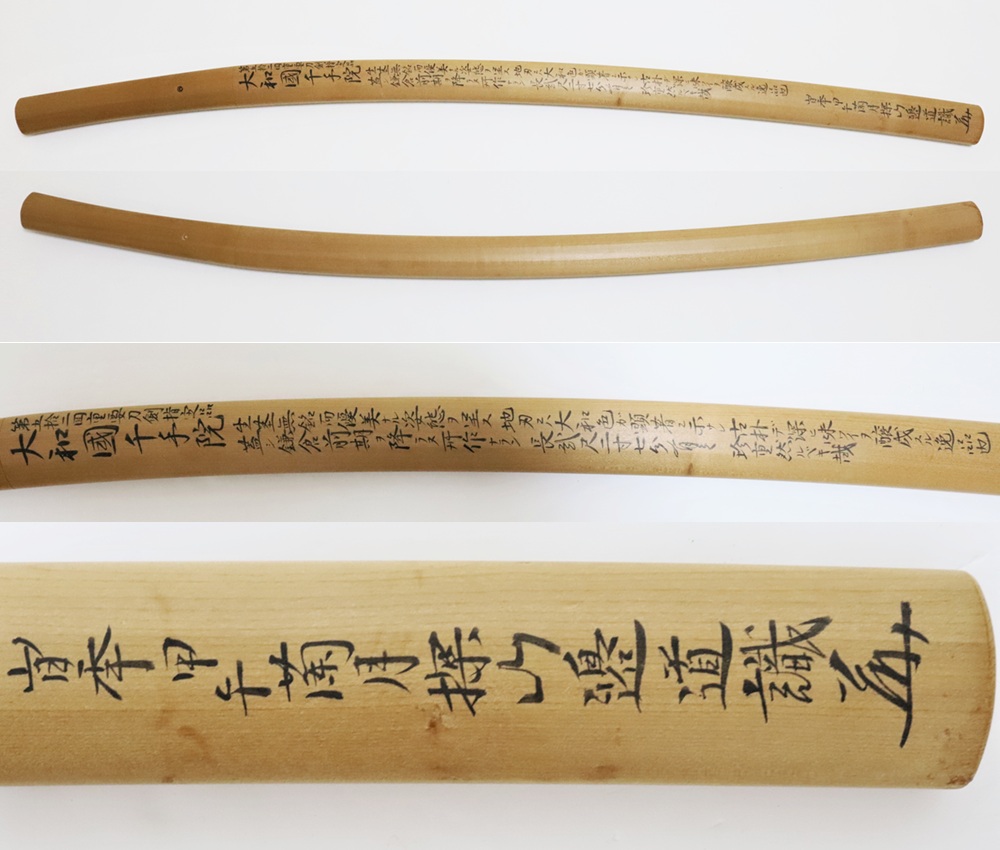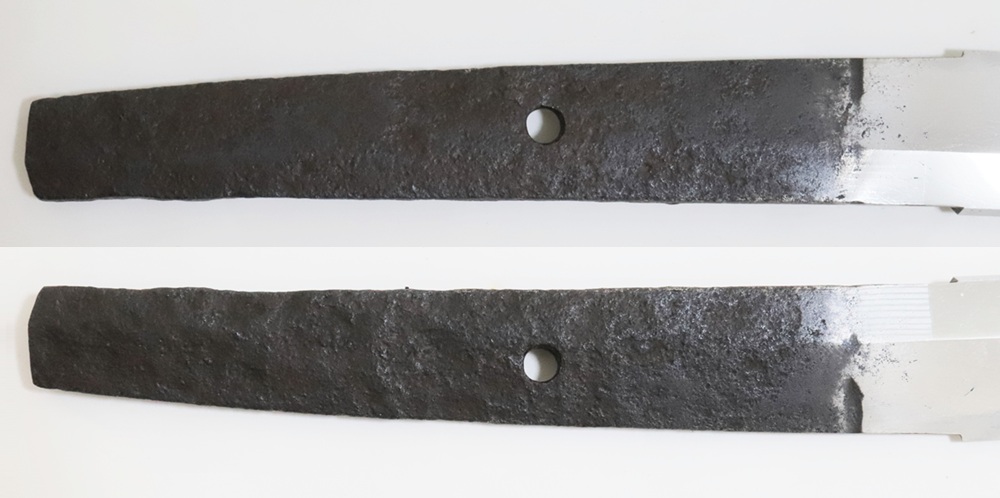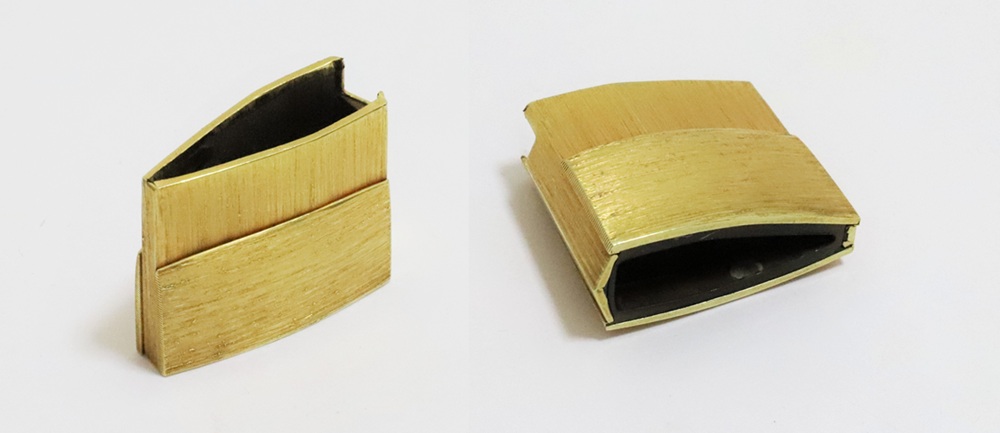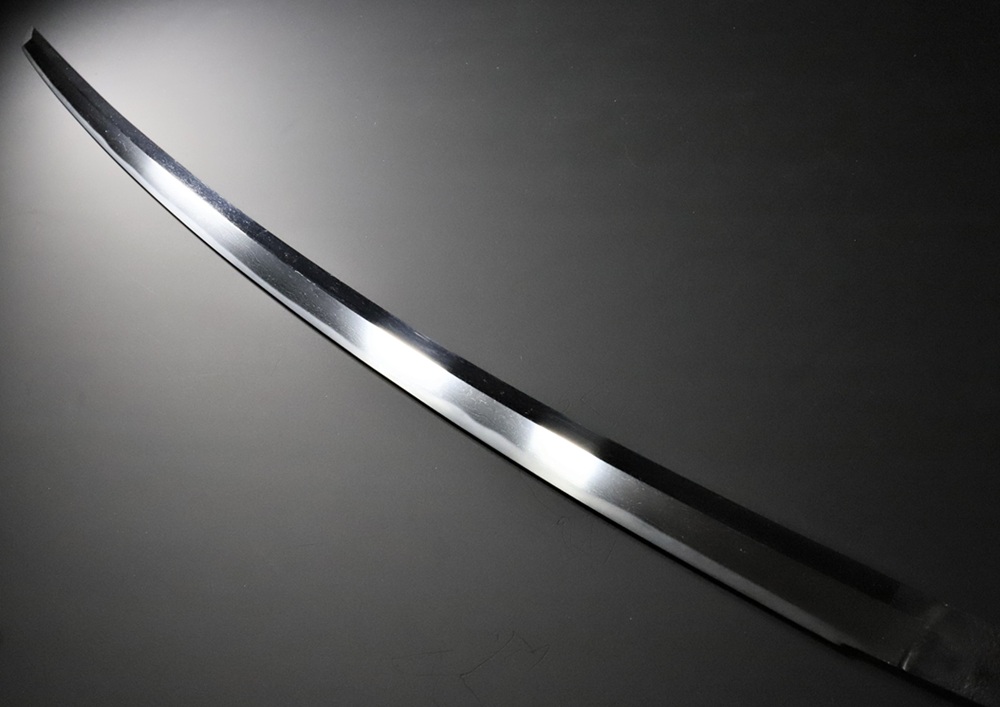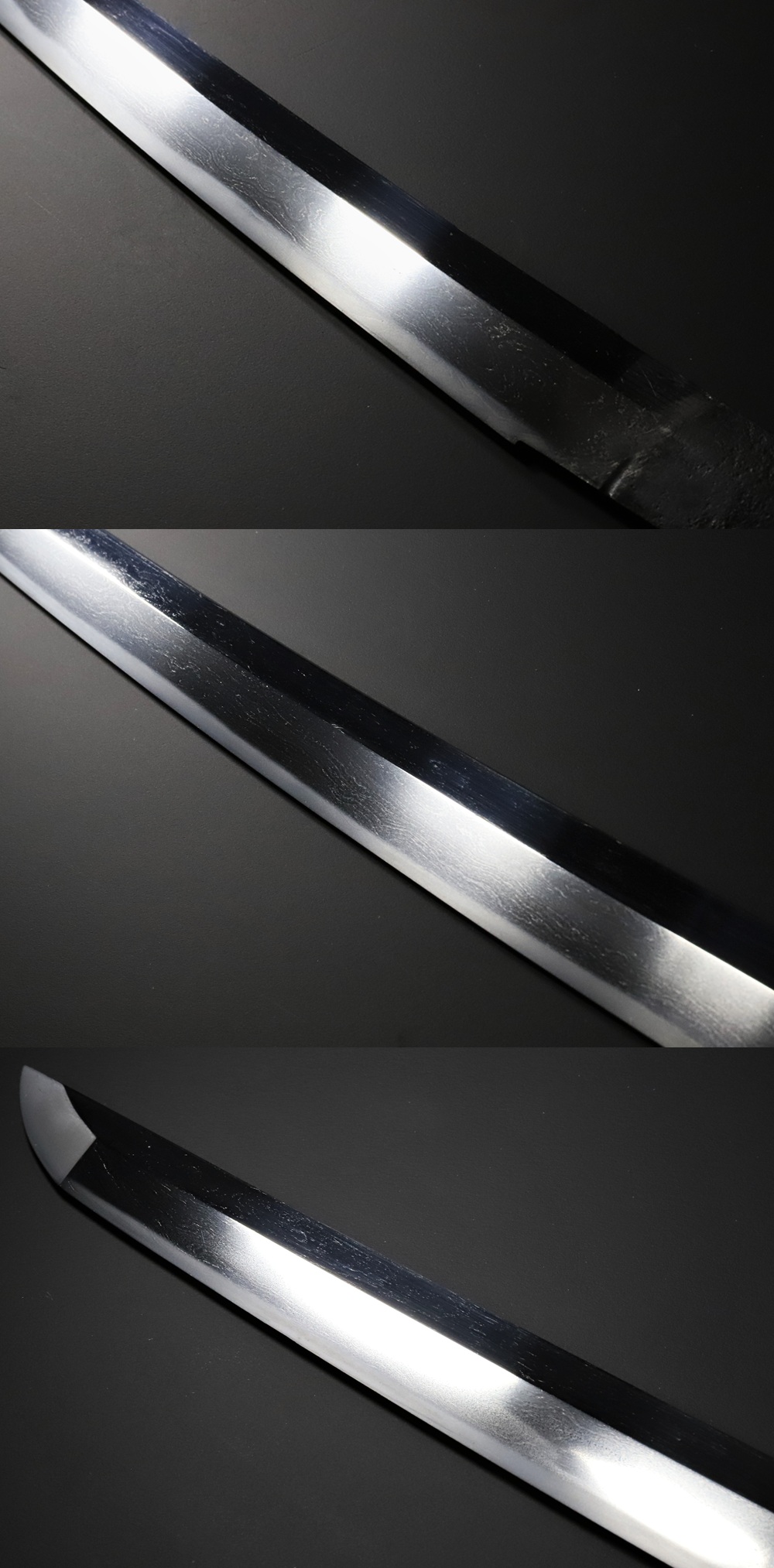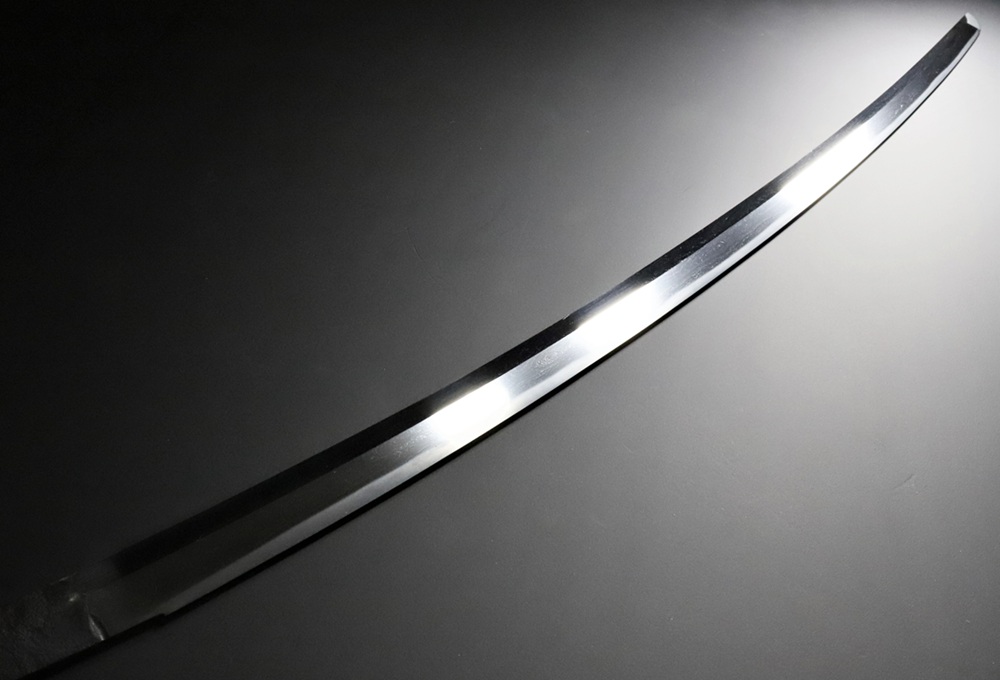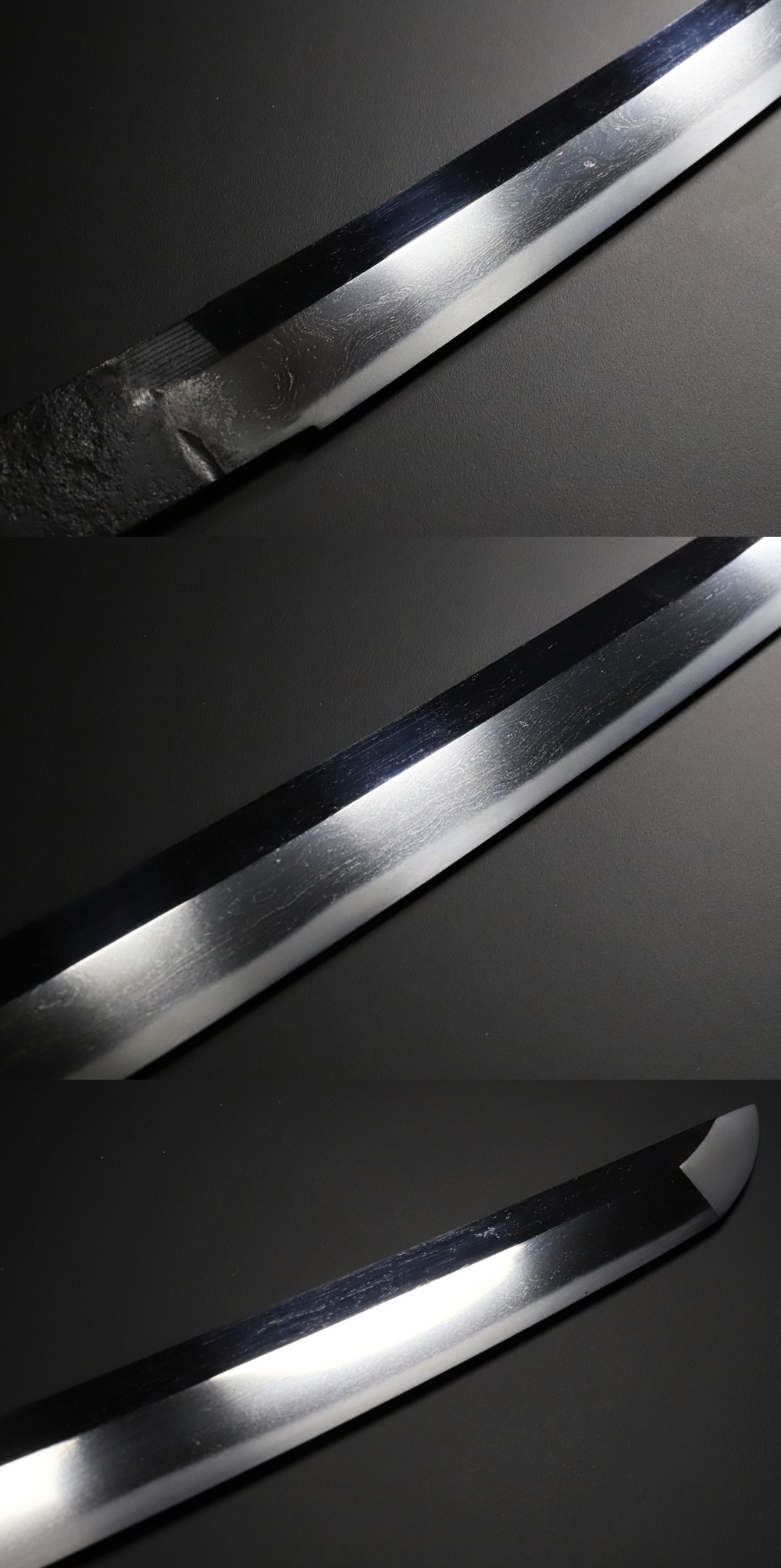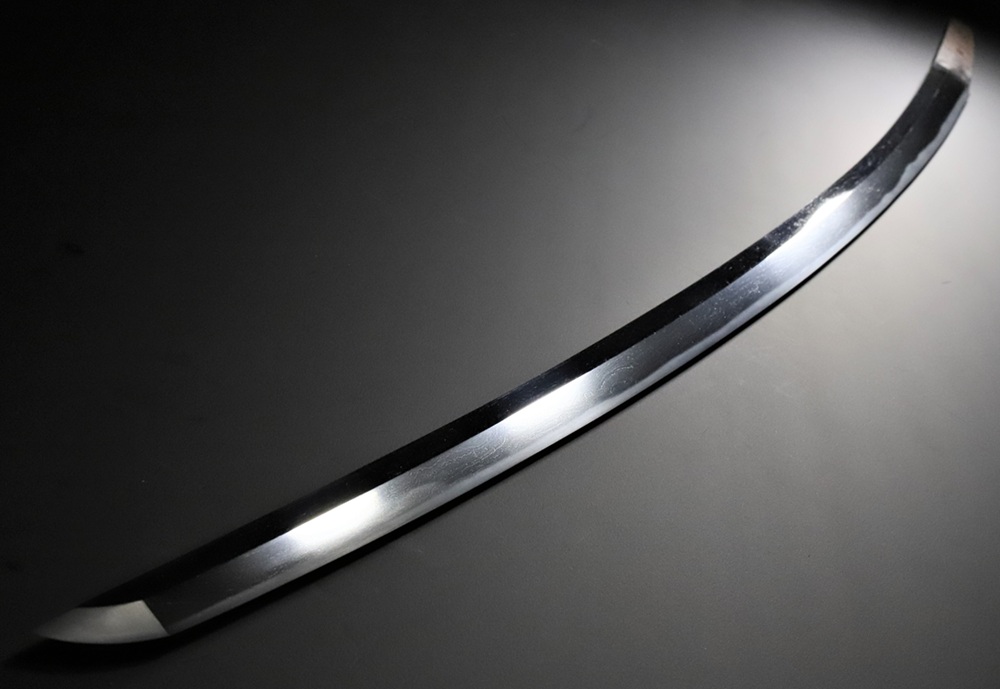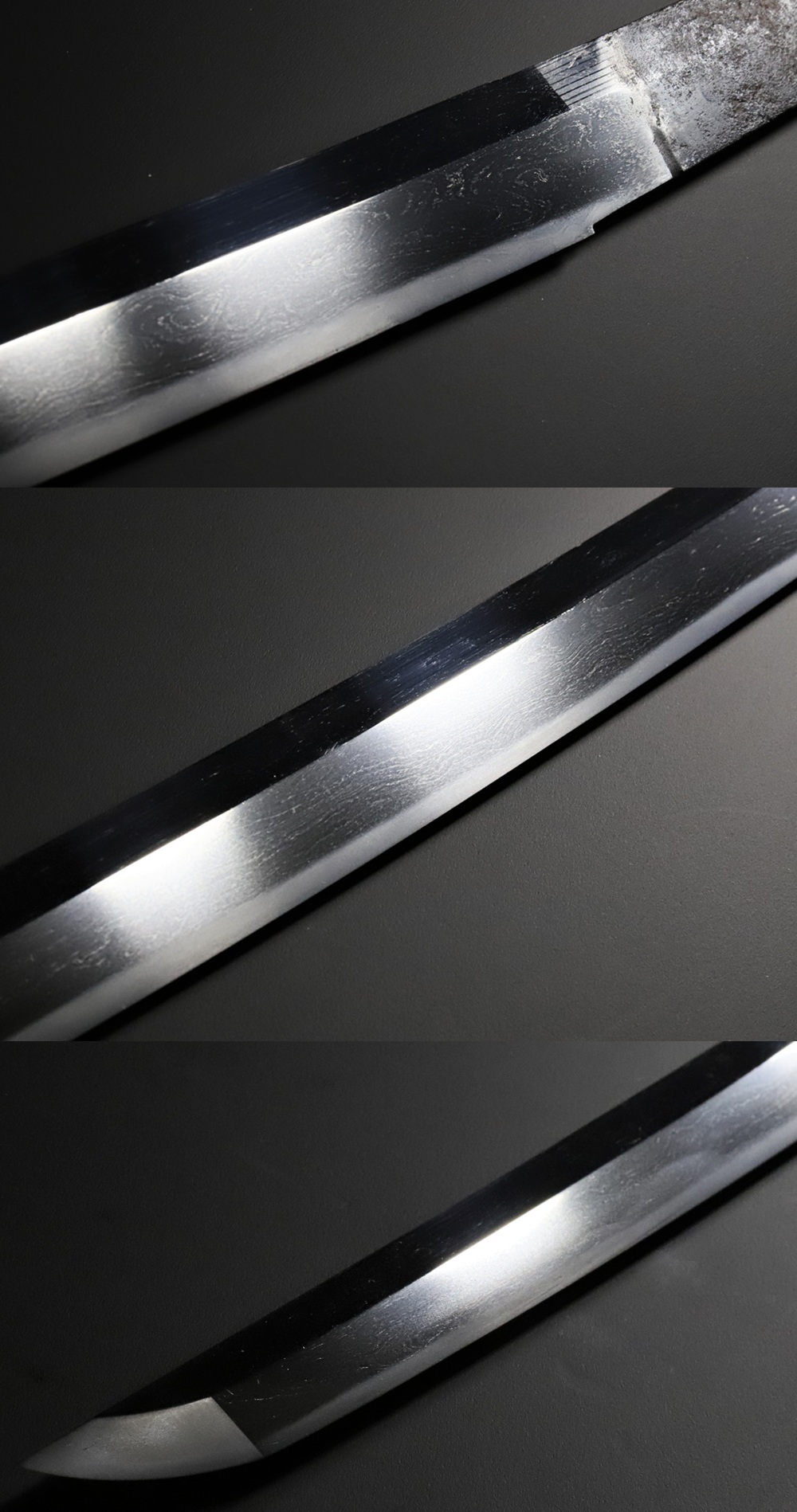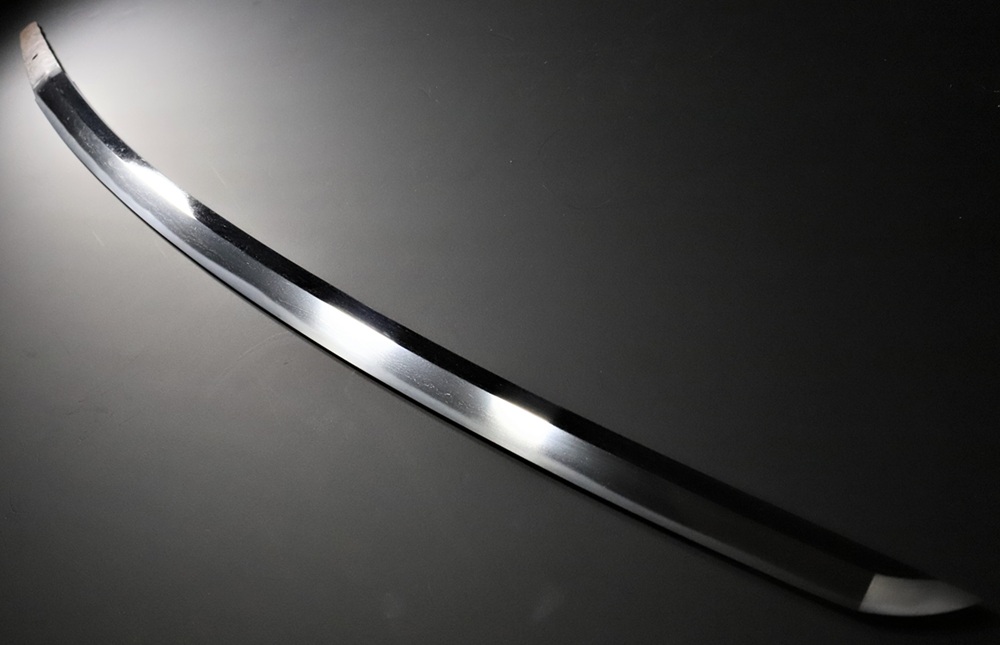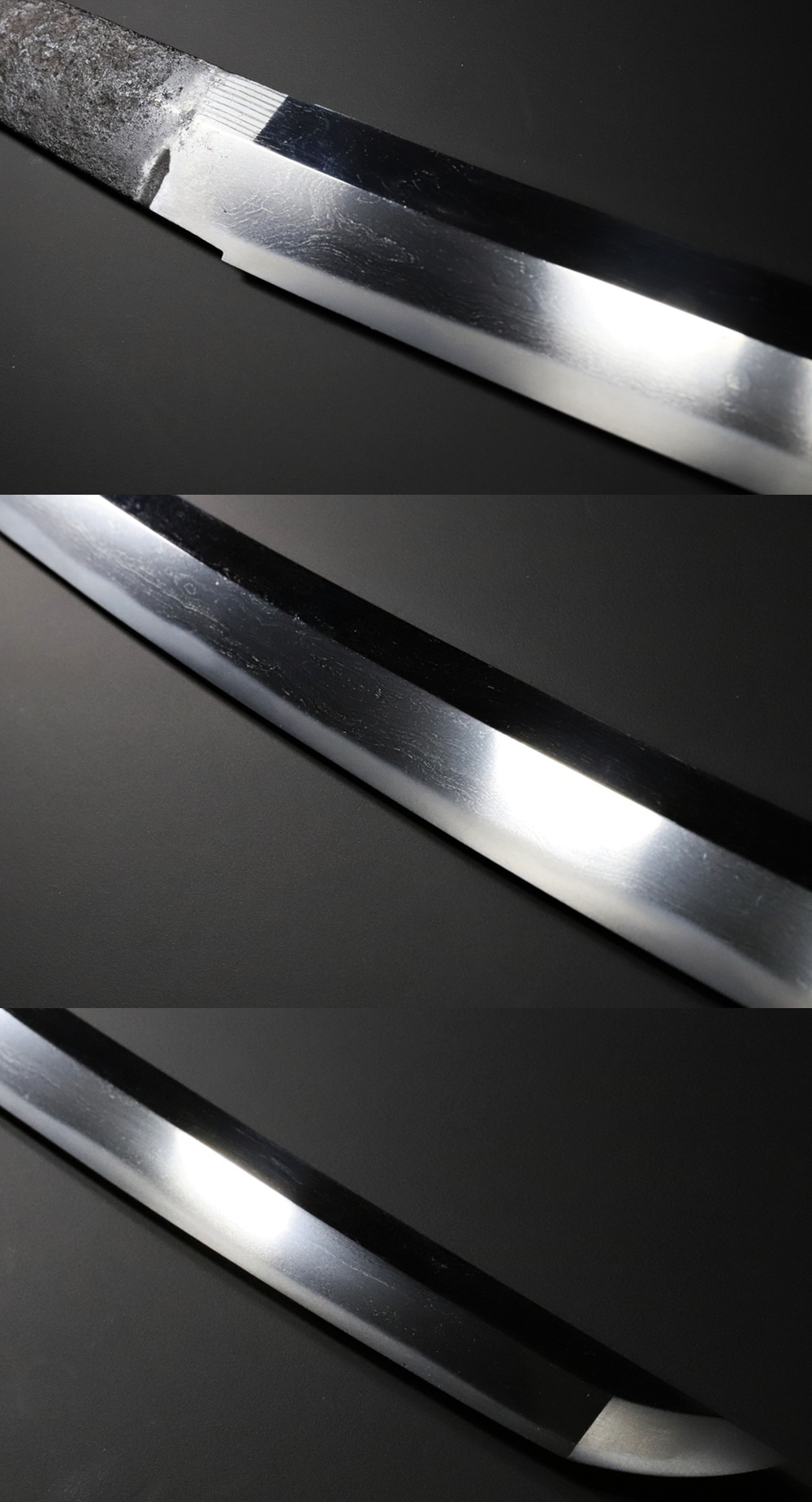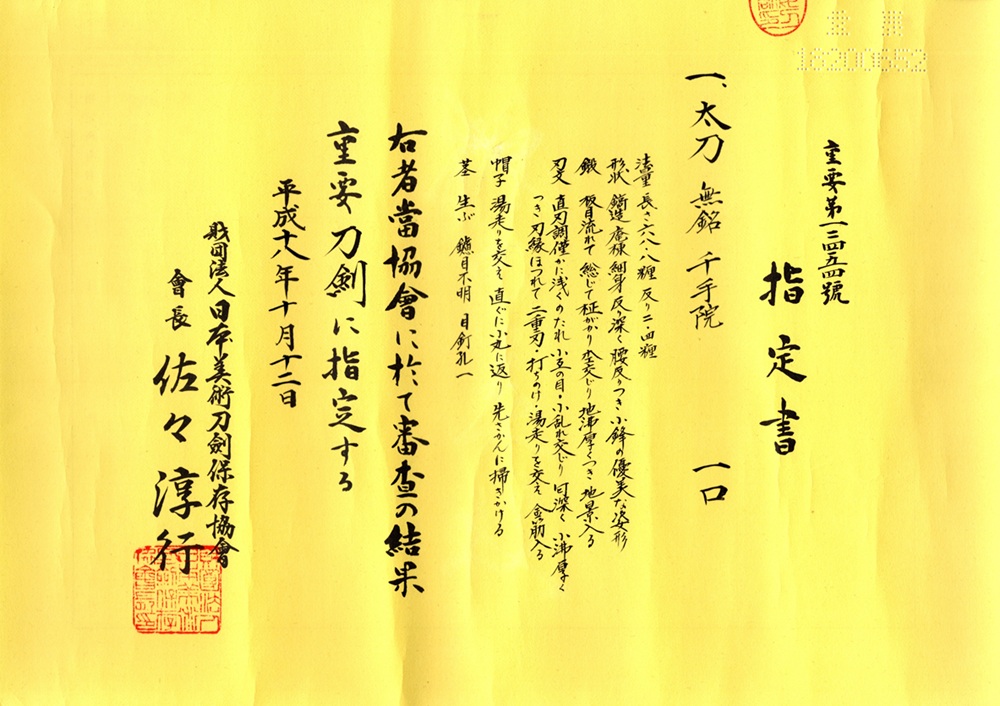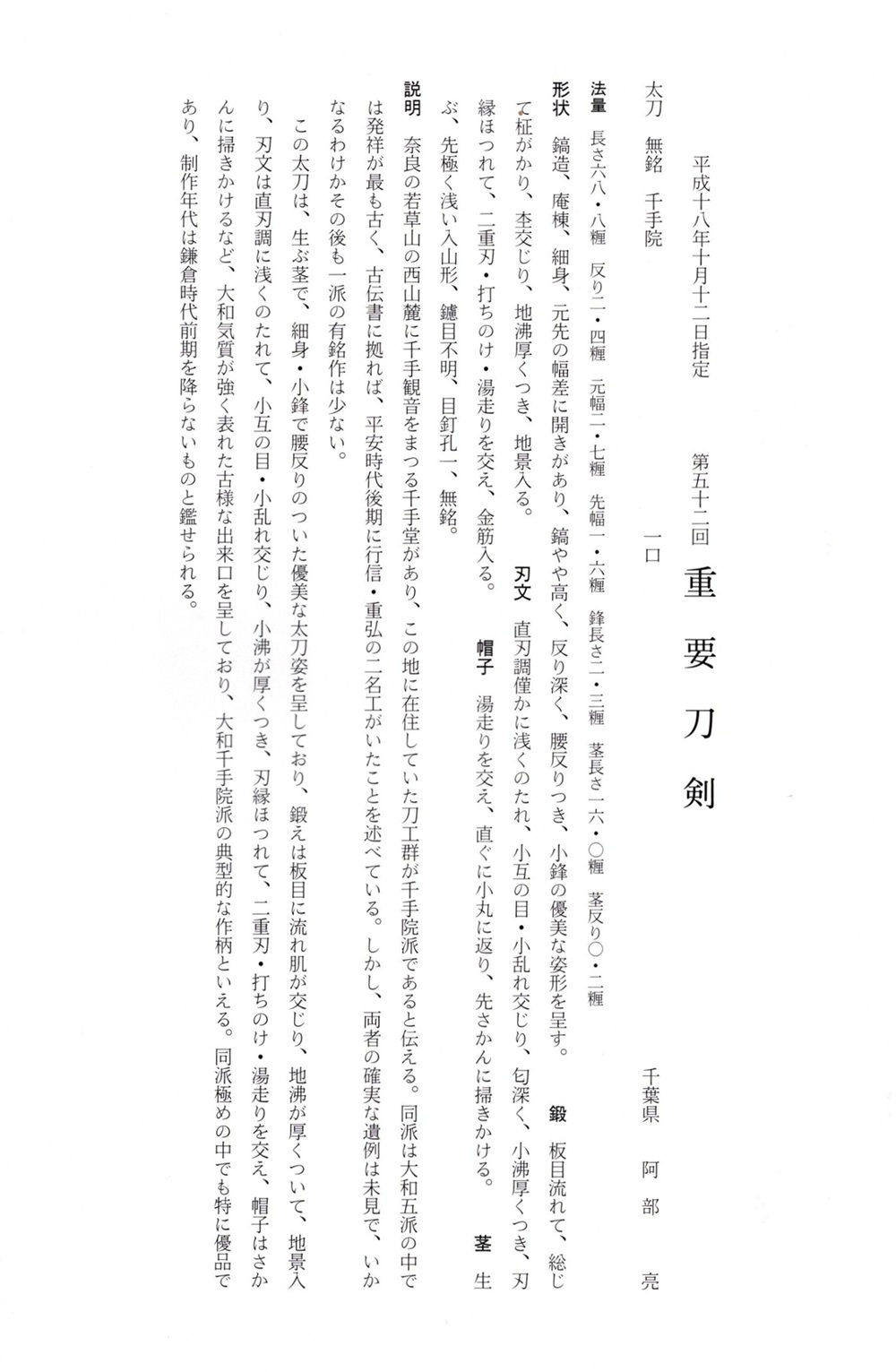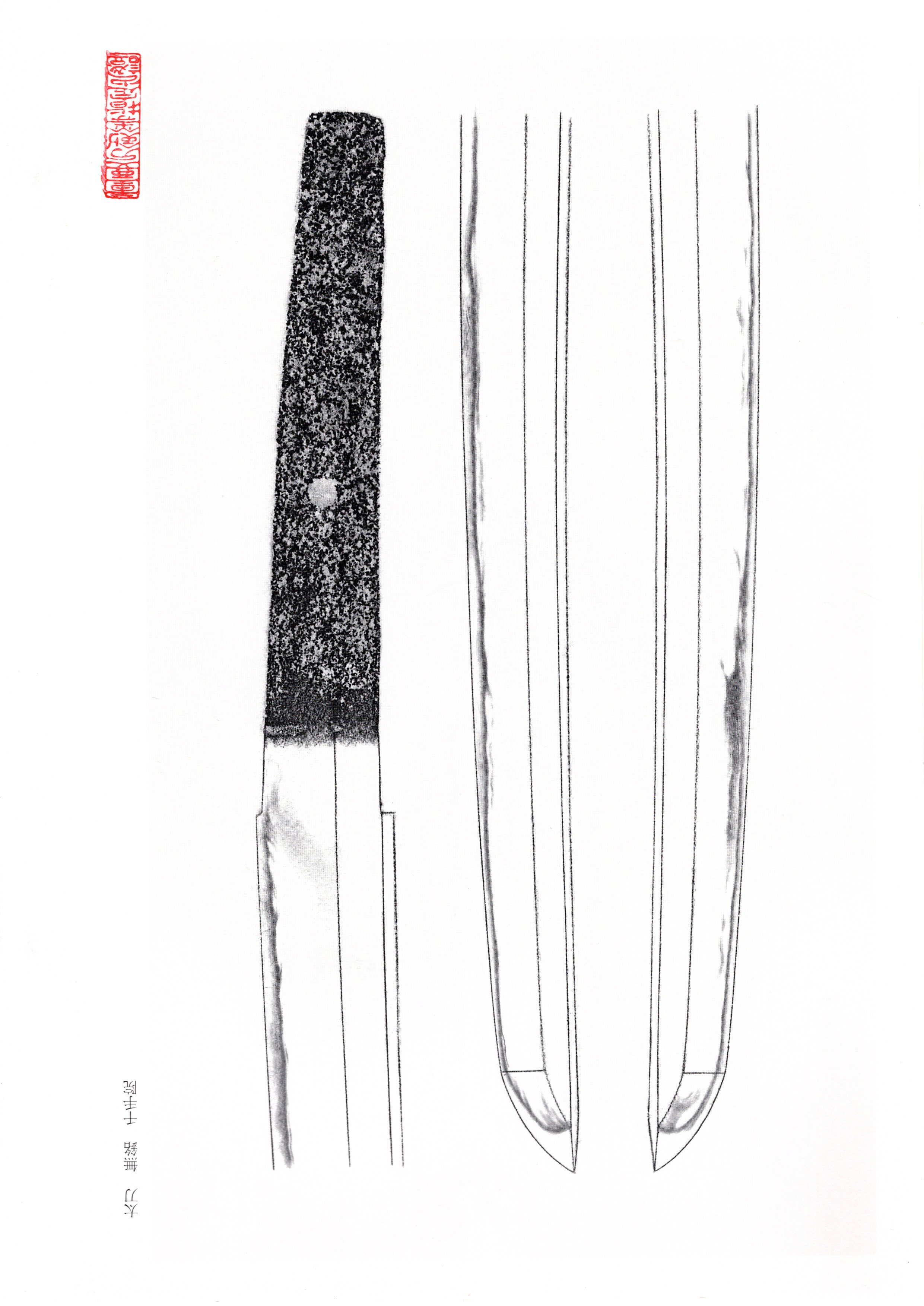
| Product No. KA-0769 無銘(千手院) | |
|---|---|
| Mei |
Mumei, but has been attributed to the Senjuin School Back: -- |
| Shape | Shinogizukuri Iorimune |
| Region | Yamato Province |
| Era | Early Kamakura Period |
| Length |
69.4 cm 27.3 in |
| Sori (curvature) |
2.4 cm 0.9 in |
| Motohaba |
2.9 cm 1.1 in |
| Sakihaba |
1.7 cm 0.7 in |
| Munekasane |
0.7 cm 0.3 in |
| Status | Juyo Token |
| Certification Date | October 12, 2006 |
| Registration Authority | Nagano Prefecture |
| Registration Date | November 01, 1955 |
| Jihada (Metal pattern) | Itame-nagare and mokume with thick jinie and chikei |
| Hamon (Temper line) | Suguha, a bit notare with ko-gunome, ko-midare, ko-nie, hotsure, nijyuba, uchinoke, yubashiri and kinsuji |
| Bōshi (Point / Tip) | Sugu komaru turn with yubashiri and hakikake |
| Nakago (Tang) | Mumei, but ubu. Uncertain file, shallow iriyama end |
| Mekugiana (Rivet holes) | 1 |
| Habaki | Two part, copper base gold foil with file habaki |
Price |
SOLD |
| This katana is mumei, but has been attributed to the Senjuin [千手院]school and passed the 52nd Juyo Token shinsa in 2006. The Senjuin school is said to have been a group of swordsmiths belonged to a monastery near Senju Valley at the foot of Mount Wakakusa in Nara. Traditional records trace its origins to Yukinobu [行信] and Shigehiro [重広] in the late Heian period, though no signed works exist. Mumei swords recognized as the Senjuin feature an ancient style in their form and hamon, representing the oldest Yamato-mono swords. They possess an elegant, antique quality, appearing as Yamato-mono yet judged to have been forged no later than the Kamakura period. They were Yamato-mono swords but do not fit the styles of the other four schools (Taima [当麻], Tegai [手掻], Hōshō [保昌], Sikkake [尻懸]). This katana features a ubu/original nakago, a slender shape, ko-kissaki with a graceful koshi-sori curvature. The kitae/forging shows a mix of itame and nagare-hada/flowing grain, with thick ji-nie and chikei. The hamon is suguha base, shallow notare with ko-gunome and ko-midare, ko-nie, hotsure, nijyuba and yubashiri. The boshi is Sugu komaru turn with yubashiri and hakikake, presenting an ancient-style finish strongly reflecting the feachers of the Yamato Senjuin school. Among the finest examples of this school, its production date is judged to be no later than the early Kamakura period. It has a sayagaki by Tanobe (Tanzan) sensei. |


